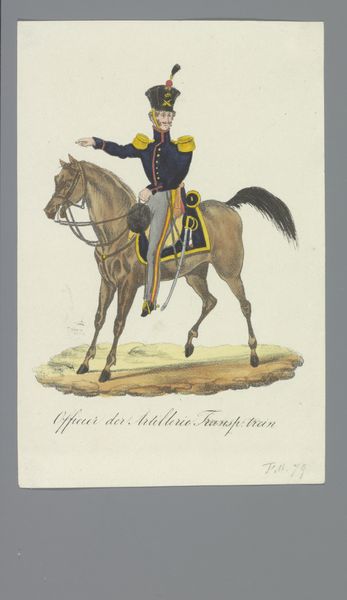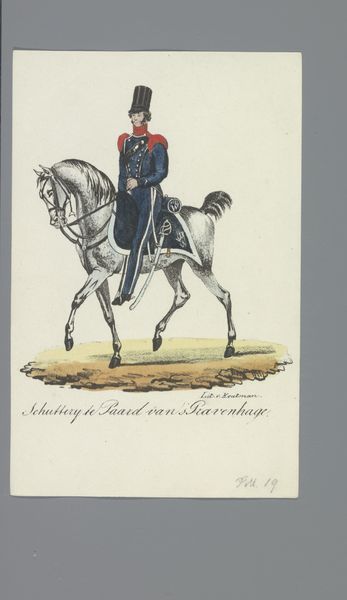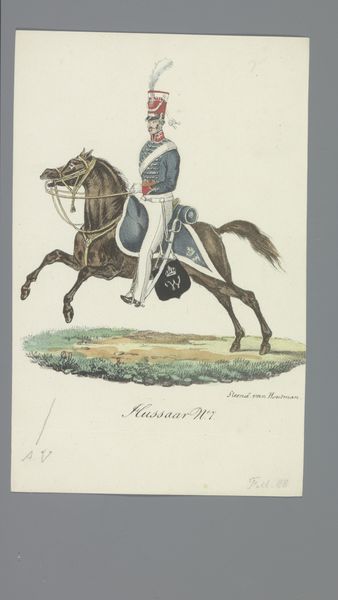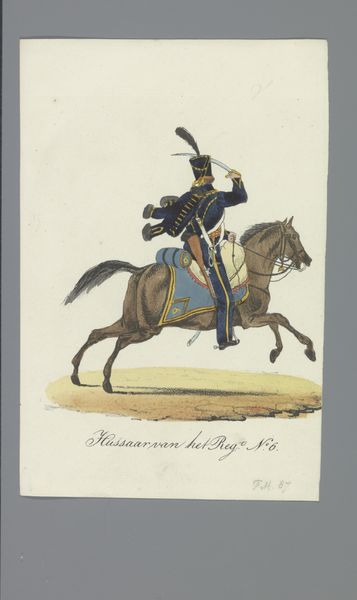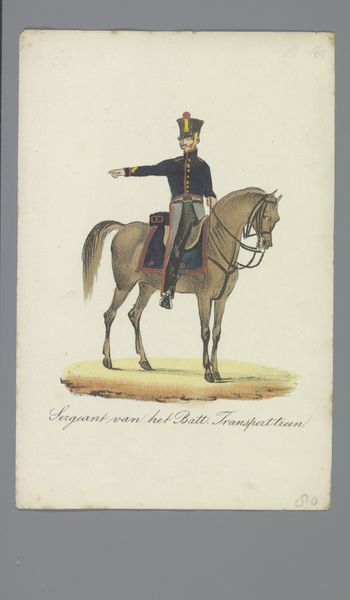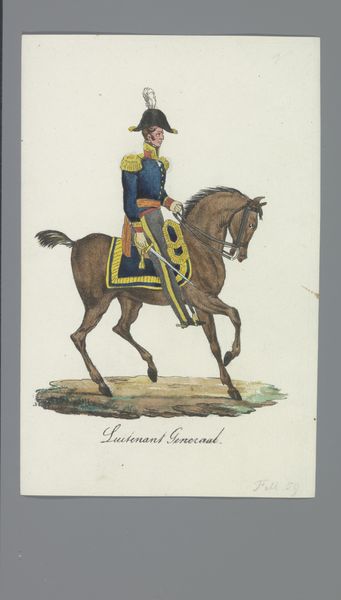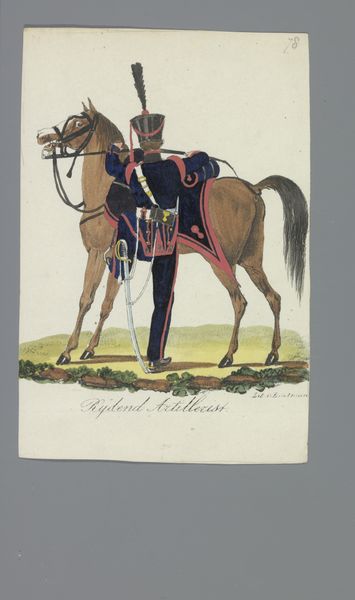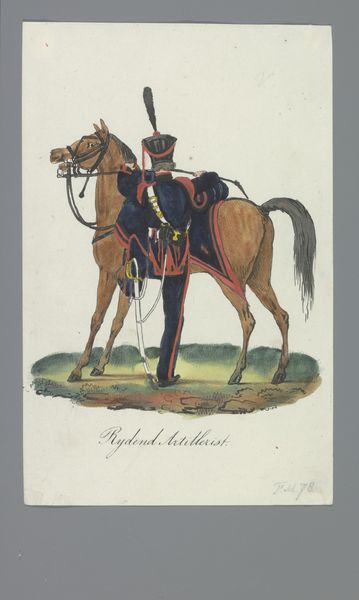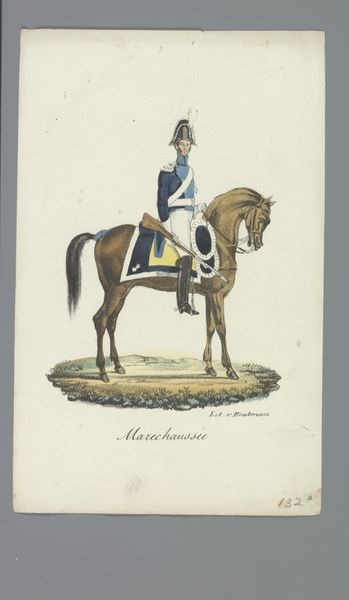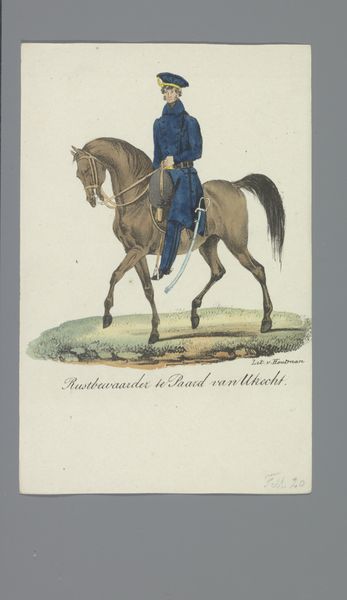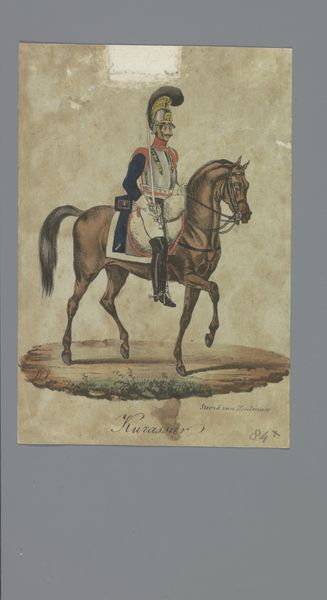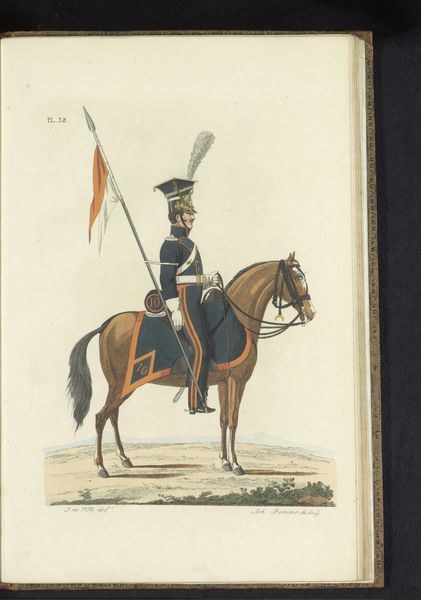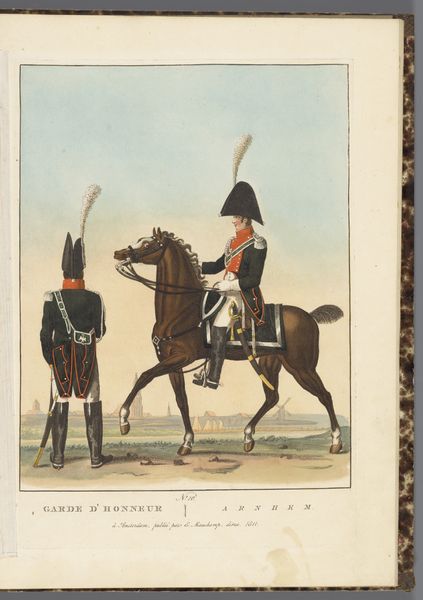
painting, watercolor
#
portrait
#
painting
#
figuration
#
watercolor
#
romanticism
#
costume
#
watercolour illustration
#
genre-painting
#
history-painting
Dimensions: height 170 mm, width 110 mm
Copyright: Rijks Museum: Open Domain
Editor: This is "Schutterij te paard van Amsterdam" painted by Albertus Verhoesen sometime between 1835 and 1850, using watercolor. I find the clean lines and defined form interesting, as if extracted from a larger narrative, don't you think? What's most striking to you about its composition? Curator: Indeed. The pictorial structure presents a fascinating study in form and function. Notice the sharp delineation of the figure against the stark background. Observe, also, how Verhoesen orchestrates a controlled palette, dominated by somber blues and browns, punctuated by accents of red. How might we read these compositional choices through a structuralist lens? Editor: Well, the limited palette creates a hierarchy. Red definitely stands out, perhaps symbolizing authority or valor? What about the rider's gesture – the extended arm – is that a significant compositional element? Curator: Precisely. The gesture and the gaze direct the eye outward, fracturing the picture plane, hinting at a world existing beyond its frame. Also consider the subtle gradations of tone; how they model the form, rendering depth and volume within a largely flat picture plane. The horse is nicely done and appears almost to rear, perhaps indicating some forward momentum, albeit constrained. Editor: I hadn't considered the tension between the flatness and depth. Thinking about it now, I see how Verhoesen uses color and line to guide my eye and to communicate different concepts such as hierarchy and direction. Thank you! Curator: The synthesis of line, tone, and direction can produce a harmonious statement of visual composition and it remains powerful to this day. We come away understanding the strategic arrangements that deliver meaning.
Comments
No comments
Be the first to comment and join the conversation on the ultimate creative platform.
